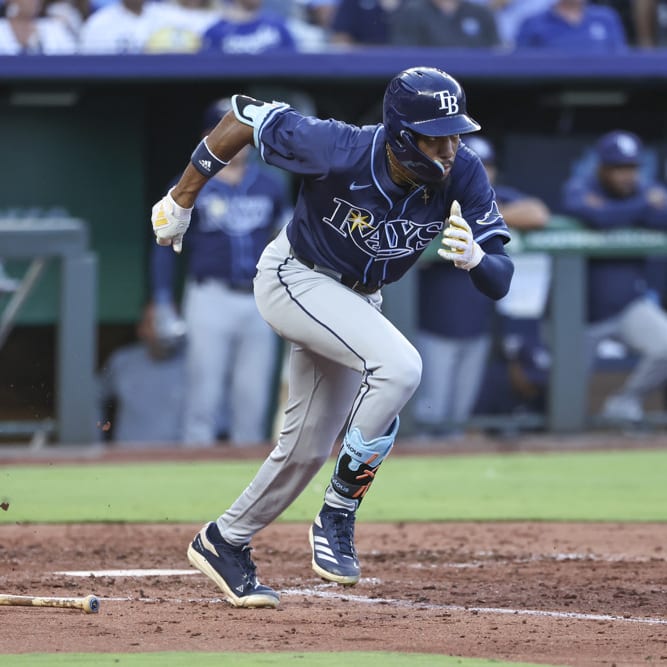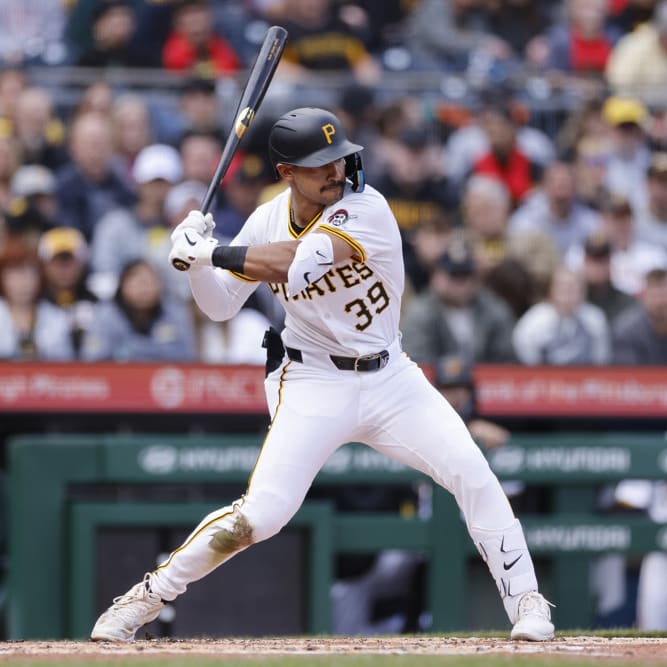This article is part of our Baseball Draft Kit series.
This year's international class is headlined by Kenta Maeda, formerly of Japan's Hiroshima Carp. The inevitable comparisons to his most immediate predecessors Yu Darvish and Masahiro Tanaka are a bit unfair, as Darvish and Tanaka were in some ways historically unprecedented. Maeda probably isn't MLB ace material, but he's a worthy prospect in his own right.
Maeda built up his resume by piling up several years of steady performances. Since his first full season in Hiroshima's rotation in 2009, Maeda has never thrown fewer than 175 innings in a season. Since his second full season, he's never posted an ERA higher than 2.60, and he has a 2.39 mark for his career. Over the last six years, his K/9 rate has never exceeded 8.1 and never fallen below 7.3, and his BB/9 rate has steadily hovered around 1.9. Maeda's success has come from limiting hits, and more recently, keeping the ball in the park. His home runs allowed total has fallen from 22 in 2009 to just five in 2015. Look for that number to regress some against MLB competition.
His arsenal of pitches is solid, but not quite eye-popping. Maeda's fastball sits from 89-92 mph with some movement, and it reaches 94 mph on occasion. His featured breaking pitch is his slider, of which he throws two varieties: a traditional slider and a tighter, more cutter-ish version. He'll also mix in an improving changeup and a curveball. Provided he can command all his pitches with the MLB ball,
This year's international class is headlined by Kenta Maeda, formerly of Japan's Hiroshima Carp. The inevitable comparisons to his most immediate predecessors Yu Darvish and Masahiro Tanaka are a bit unfair, as Darvish and Tanaka were in some ways historically unprecedented. Maeda probably isn't MLB ace material, but he's a worthy prospect in his own right.
Maeda built up his resume by piling up several years of steady performances. Since his first full season in Hiroshima's rotation in 2009, Maeda has never thrown fewer than 175 innings in a season. Since his second full season, he's never posted an ERA higher than 2.60, and he has a 2.39 mark for his career. Over the last six years, his K/9 rate has never exceeded 8.1 and never fallen below 7.3, and his BB/9 rate has steadily hovered around 1.9. Maeda's success has come from limiting hits, and more recently, keeping the ball in the park. His home runs allowed total has fallen from 22 in 2009 to just five in 2015. Look for that number to regress some against MLB competition.
His arsenal of pitches is solid, but not quite eye-popping. Maeda's fastball sits from 89-92 mph with some movement, and it reaches 94 mph on occasion. His featured breaking pitch is his slider, of which he throws two varieties: a traditional slider and a tighter, more cutter-ish version. He'll also mix in an improving changeup and a curveball. Provided he can command all his pitches with the MLB ball, all of his offerings should be average or above.
Look for Maeda to be a reliable, mid-rotation innings eater after he signed with the Dodgers in December. Fantasy owners looking for an edge might con- sider grabbing him early in the season, as Japanese pitchers frequently per- form well on their first trip through the league.
This year's premier offensive import is Byung-ho Park, a slugger from the KBO. After showing that he has nothing left to prove in Korea, Park was posted and snapped up by the Twins. The interest in Park was well warranted, as even in the offense-rich KBO his numbers were dominant, and he appeared to improve his physique and conditioning in 2015. His power should play in MLB, but a cautionary note is that he will take his share of strikeouts, as he fanned 303 times in 1,193 plate appearances over the last two seasons.
Realistically, Park's numbers are going to drop off to some extent in MLB, but how much? We don't have much precedent to go off of, as Jung-ho Kang was the first Korean position player to move directly from the KBO to MLB, and he's a different type of player. Fortunately, KBO stars have been moving to Ja- pan for years, including some sluggers that profile similarly to Park. The case of Seung Yuop Lee may be instructive. Like Park, Lee was a star first baseman with established 50-homer power in Korea. Lee moved to NPB in 2004 at age 27, and saw his home-run output drop from 56 to 14, before recovering to 30 in 2005 and eventually peaking at 41 in 2006. Park appears to have the talent to produce in MLB, but there may be a similar adjustment period.
The Orioles have been savvy bargain shoppers in the international free agent market, and they are hoping to continue that trend by adding Hyun-soo Kim out of Korea. Kim lacks the raw power of Park, and the longer track record of Dae-ho Lee, but is an interesting prospect nonetheless. His most apparent strength is his patience at the plate, as he has walked more than he has struck out in six of his eight full KBO seasons, and has a knack for laying off close pitches. He's shown some pop over the course of his KBO career, but his power appears to be mostly the product of a lively KBO ball and seems unlikely to translate to MLB. His swing is somewhat reminiscent of Hideki Matsui's, notably lacking the leg kick that many Asian batters feature. This bodes well for the likelihood that he'll be able to catch up with MLB fastballs. Defensively, his poor range will limit him to left field and DH. It's worth noting that while Kim hit both righties and lefties well in 2015, he showed a bit more power against righties, which could nudge him toward a platoon role.
There are not many immediate impact players coming over from Cuba this season. The recent wave of departures has left the top talent in Cuba very thin and one remaining star (Alfredo Despaigne), doesn't appear to have any desire to defect. Most of the Cubans signing with MLB teams are younger players, often teenagers, who have tremendous potential, but are years away from playing in the majors.
The one player who has left Cuba that could make an immediate impact on the big league level in 2016 is Jose Miguel Fernandez.
Fernandez had been one of the top players in Cuba and was the No. 3 hitter for Cuba's 2013 World Baseball Classic team. He hit .326/.482/.456 in the Serie Nacional, Cuba's professional league, in 2014-15, and Baseball America at the time ranked him as the No. 3 player in Cuba. Fernandez tried to leave the country in October 2014, but was caught and suspended for the rest of the 2014-15 Serie Nacional season. He was successful in his second attempt to leave Cuba in December 2015 and will try to sign with a MLB team for the 2016 season. Fernandez is seen as major league ready and could be a starter at second base for a MLB team, but the long layoff could force him to spend time in the minors initially.
This article appears in the 2016 RotoWire Fantasy Baseball Guide. Order the magazine here!











